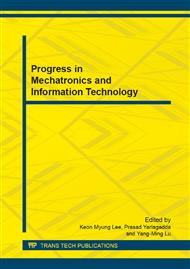p.788
p.794
p.798
p.803
p.809
p.815
p.820
p.826
p.833
Attitude Controller Design of Multiple Independently Targeted Reentry Vehicle Based on Internal Model Control
Abstract:
A Multiple Independently Targeted Reentry Vehicle (MIRV) is a ballistic missile payload containing several warheads each capable of hitting one of a group of targets. In the process of missile flight control, the release of warheads brings about coupling to the missile attitude control system which will lower the flight stability. In order to solve this problem, a missile attitude controller, which combined the α-order integral inverse system with internal model principle, was presented. Firstly, determine the Post Boost Vehicle (PBV) attitude dynamics model. Then, combine the linearization of attitude dynamics equation with feed-forward decoupling method to implement the attitude decoupling. Finally, a two-degree of freedom (TOF) multivariable internal model controller was set up to optimize the control system performance. Simulation results show that the coupling of attitude control system has been eliminated. Compared with the original system, the internal model controller provides the control system better input-tracking performance, robust stability and interference suppression capacity.
Info:
Periodical:
Pages:
809-814
Citation:
Online since:
November 2013
Authors:
Keywords:
Price:
Сopyright:
© 2014 Trans Tech Publications Ltd. All Rights Reserved
Share:
Citation:


